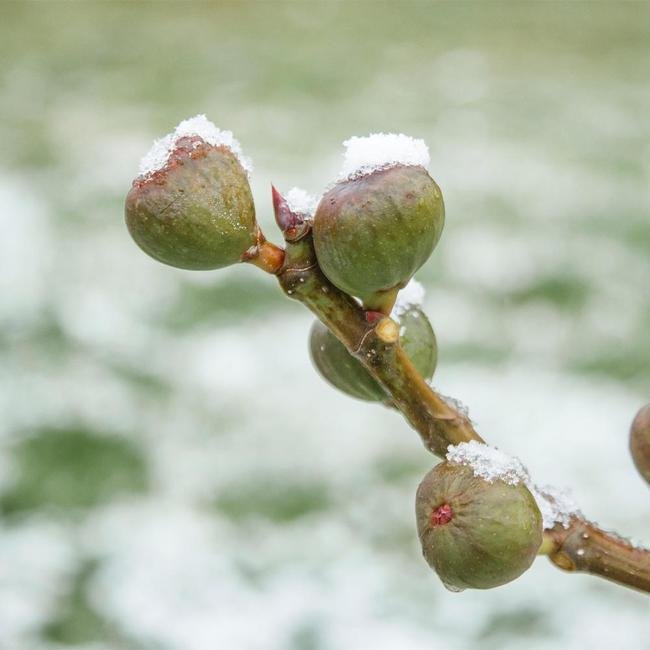A fig tree’s outsized role in helping the planet
Fig trees grow fairly well if you can give them space and plenty of light. (photo source: Ross Raddi)
I had an Environmental Studies professor in college who was really excited about fig trees. He made a strong case for why they’re ecologically important plants thanks to some unusual properties. This was news to his students most of whom, like me, thought of them as little more than Fig Newton fodder. In fact, the topic of figs has rarely come up for me since I graduated from school a few years ago.
“Fig trees are quiet superheroes, thriving in landscapes where human and animal survival doesn’t always look promising.”
But researchers from around the globe share my professor’s enthusiasm. In multiple studies, they have revealed the ways fig trees act as quiet superheroes, thriving in landscapes where human and animal survival doesn’t always look so good.
One of the tree’s super powers is a massive seed spreading capability that enables figs to easily repopulate. In tropical climates, where most fig varieties grow, they’re considered a keystone plant because most fruit-eating species depend on them. According to a study from the University of Leeds, a whopping 1,300 bird and mammal species like to eat them, and many go on to disperse seeds.
This makes fig trees a useful tool for reforesting tropical rainforests, home to half of the planet’s land-based biodiversity. That rich variety of life makes restoring land that has been cleared, by development or agriculture, an enormous challenge. But planting fig trees in these barren landscapes allows them to more quickly recover their biodiversity. For this reason, some scientists suggest that at least 10 percent of the plants used in tropical-reforestation projects be fig saplings.
Living bridges provide green alternatives to man made structures. (photo source: NPR)
Fig trees are also quite resilient, able to thrive in both flood- and drought-prone conditions. This makes them a life support system in regions that are typically wet, and only becoming more so due to climate change. Living bridges created by a fig tree’s elaborate root system can sometimes be more reliable than man made structures.
A 2015 study for the International Association for Bridge and Structural Engineering detailed how these bridges, which can span 15 feet to 250 feet, are helping anchor shifting landscapes in flooded communities. In another study, conducted in drought-stricken Northern Ethiopia, scientists found that the common fig ranked first among the top 10 species of trees for climate resilience.
“The physical strength, resilience and animal magnetism of fig trees are powers we can tap as we grapple with Earth’s fast-changing climate.”
“The physical strength, resilience and animal magnetism of fig trees are powers we can tap as we grapple with Earth’s fast-changing climate,” writes Mike Shanahan, author of God, Wasps and Stranglers: The secret history and redemptive future of fig trees.
One problem with fig trees is that certain types depend on fig wasps for pollination and repopulating. As temperatures rise, fig wasp life spans are shortening, and putting the fig tree at risk.
The potential extinction of fig wasps has some scientists concerned. “This [dependence] implies that fig populations…could be extremely vulnerable to anthropogenic global warming,” researchers in Singapore concluded. “Because of their ecological importance, any loss of fig species or reduction in their abundance would be of major conservation concern.”
GROWING A FIG TREE
If you, like me, are inspired enough by the story of fig trees to want to grow one of your own, I can share a few tips. Ficus, the fig genus, is made up of more than 850 species, making it among the world’s most varied plant families. Most home gardeners choose to grow the common fig tree (Ficus carica) because it self-fertilizes, meaning it doesn’t need a fig wasp to grow fruit. The common fig comes in many varieties, including ones that can be grown outdoors in slightly cooler climates—like the Chicago Hardy Fig, which works for me because I live in Ohio. Even so, I’ll grow it in a pot so I can move it indoors when the weather becomes too cold.
The Chicago Hardy Fig, blanketed with snow, displays the kind of resilience the Ohio-based author is looking for. (photo source: Fast Growing Trees)
Given the variety of fig trees, and the range of conditions they can grow in, there isn’t a catch-all way to grow them. But a few general tips can help get you started.
Figs grow best where they have lots of sunlight and plenty of room to grow.
They have wide root systems that can interfere with pipelines and sidewalks, so plant them with this in mind. (Yet another reason I’m sticking with a container.)
Outdoor fig trees are best planted in the spring after the last frost, but can also be planted in the fall before frost begins.
Figs need only be fertilized once a year and do well in two to three inches of organic compost.
NOTE: Edible fig trees were brought to California by Spanish missionaries beginning in 1769. Today, California is where most figs in this country are grown commercially. It’s also the only area in this country where fig trees are known to grow wild, since fig wasps—also imported—have no tolerance for the cold and are limited to the coastal southwest. While California fig hunters revel in all the new varieties, figs are considered an invasive presence in certain parts of the State, and limiting biodiversity by crowding out native trees and bushes.











